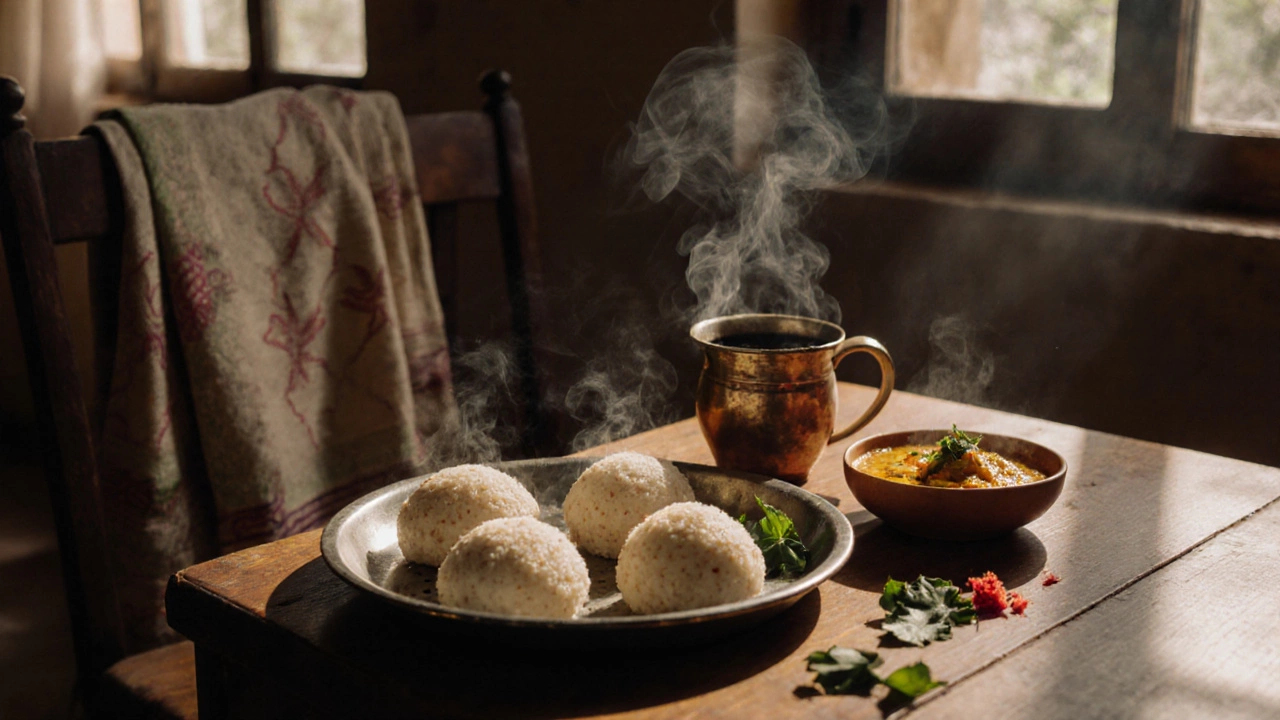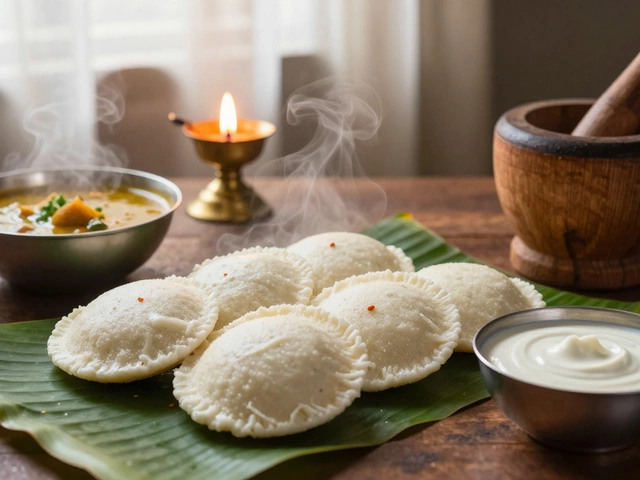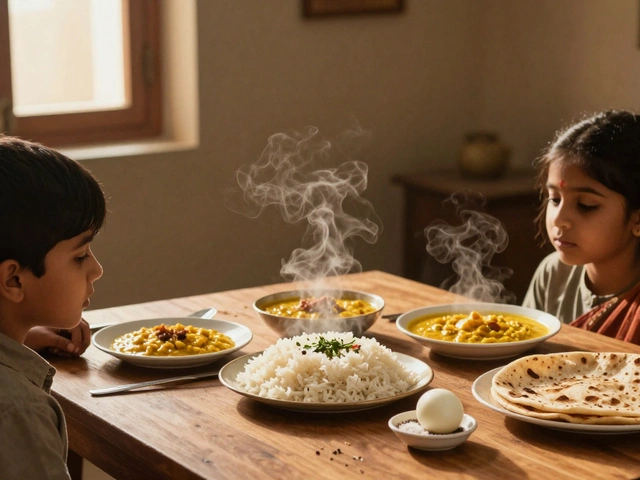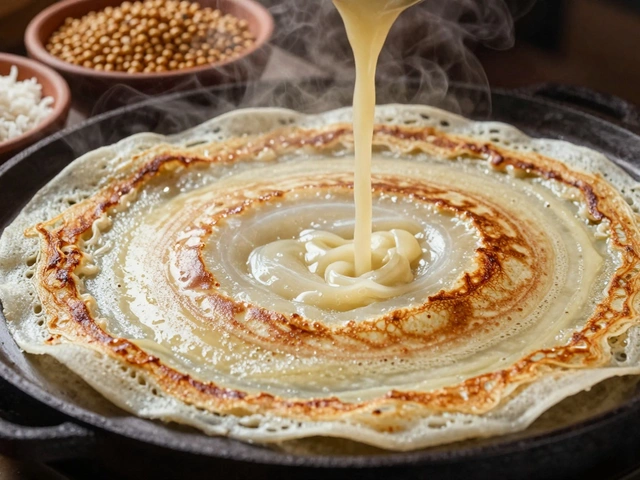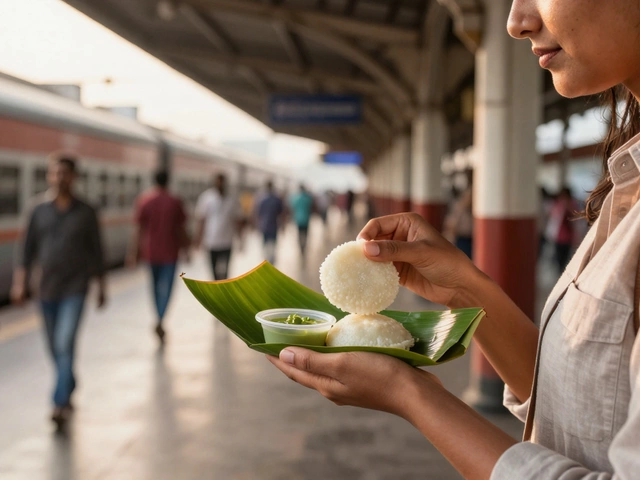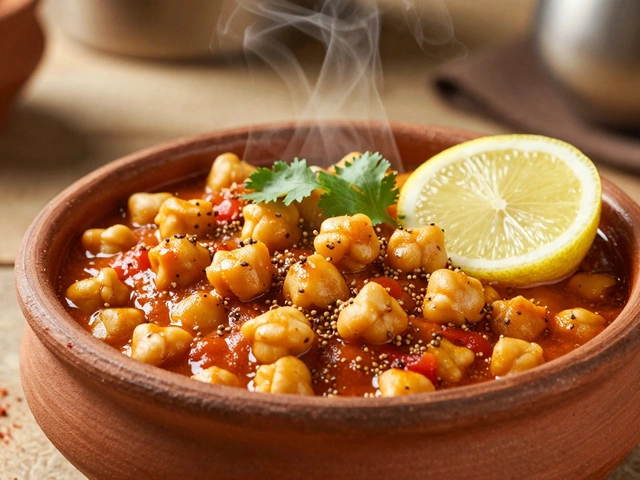Indian Breakfast Nutrition Calculator
Choose Your Indian Breakfast
Compare with Western Breakfast
Your Breakfast Nutrition
Based on your selections, your meal provides:
How this compares to Western breakfasts:
Idli & Sambar
Western Breakfast
When you think of the healthiest breakfast in the world, you might picture avocado toast in Brooklyn or oatmeal with berries in Sweden. But the real answer? It’s not in a trendy café or a wellness influencer’s Instagram feed. It’s in a quiet kitchen in southern India, where a plate of idli, sambar, and coconut chutney sits steaming on the table before sunrise. This isn’t just food-it’s a daily ritual built over centuries to fuel bodies without weighing them down.
Why Indian Breakfasts Stand Out
India doesn’t have one breakfast. It has dozens-each region, each family, each village has its own version. But what ties them together is a simple truth: they’re built on whole, unprocessed ingredients that work with your body, not against it. No sugary cereals. No pastries loaded with butter. No processed bacon. Instead, you get fermented lentils, steamed rice cakes, fresh vegetables, and spices that do more than add flavor-they aid digestion, boost immunity, and stabilize blood sugar.
Take the classic Tamil Nadu breakfast: idli and sambar. Idli is made from fermented rice and black lentils. Fermentation isn’t just an old-school trick-it’s science. It breaks down phytic acid, unlocks nutrients like iron and B vitamins, and makes the protein easier to digest. One plate of two idlis gives you about 7 grams of protein, zero cholesterol, and less than 150 calories. Pair it with sambar, a lentil-based vegetable stew packed with tamarind, drumstick, pumpkin, and lentils, and you’ve got fiber, antioxidants, and slow-releasing carbs-all in one bowl.
What Makes a Breakfast Actually Healthy?
Healthy doesn’t mean low-calorie. It means balanced. It means your body gets what it needs to start the day without crashing by 10 a.m. Most Western breakfasts fail here. A bowl of granola with almond milk might sound healthy, but it often has 30 grams of sugar. A bagel with cream cheese? That’s refined carbs and saturated fat with little protein or fiber.
Indian breakfasts, by contrast, follow three rules:
- Use fermented grains and legumes-they’re easier to digest and pack more nutrients.
- Include vegetables or lentils-not as an afterthought, but as the main ingredient.
- Avoid added sugar-sweetness comes from natural sources like coconut, jaggery, or ripe fruit.
Look at upma from Karnataka: roasted semolina cooked with onions, carrots, peas, and mustard seeds. It’s warm, filling, and has no refined flour or sugar. Or poha from Maharashtra: flattened rice tossed with curry leaves, turmeric, peanuts, and lime. It’s ready in 10 minutes, gluten-free, and gives you steady energy without the sugar spike.
How It Compares to Other Countries
Japan’s breakfast often includes miso soup, grilled fish, and brown rice. It’s clean and protein-rich. But it’s not always easy to make at home, and fish isn’t for everyone. The Mediterranean diet features olives, tomatoes, and whole-grain bread. Great, but olive oil and cheese can add up in calories if you’re not careful.
Meanwhile, India’s traditional breakfasts are:
- Plant-based by default-no meat or dairy required
- Low in added sugar-most meals have less than 5 grams
- High in fiber-thanks to lentils, vegetables, and whole grains
- Rich in probiotics-from fermentation
- Quick to prepare-many take under 15 minutes
And here’s the kicker: people in rural India who eat these meals daily have some of the lowest rates of type 2 diabetes in the world-even lower than Japan and Italy. A 2023 study from the Indian Council of Medical Research found that people who ate traditional breakfasts like idli or poha five days a week had a 34% lower risk of developing insulin resistance compared to those who ate packaged cereals or bread.
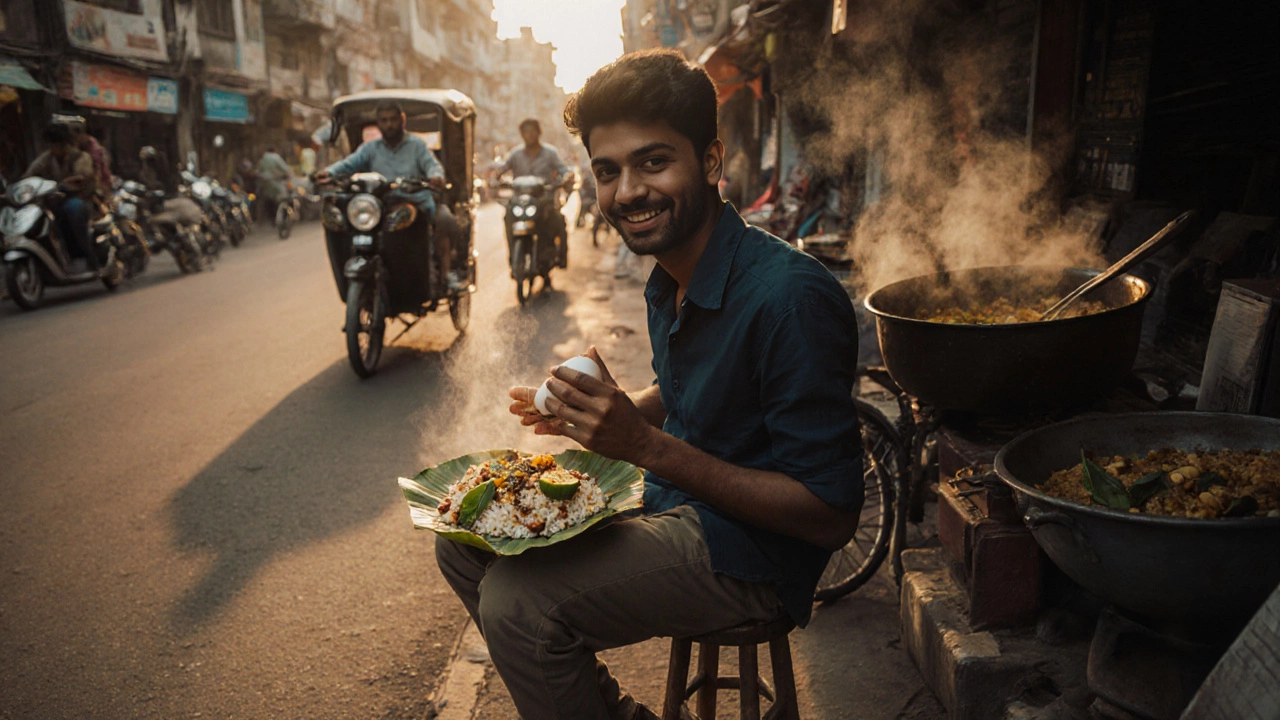
What About Dairy? Isn’t That Important?
Many health guides say breakfast needs protein and calcium-so what about milk, yogurt, or cheese? In India, dairy isn’t ignored. But it’s not the star. Buttermilk (called majjige in Karnataka or chaas in Gujarat) is served alongside meals. It’s plain, unsweetened, and full of probiotics. It cools the system, aids digestion, and replaces sugary smoothies. In South India, you’ll often see a small glass of buttermilk with a meal-not as a drink, but as a digestive aid.
Yogurt is used too, but usually in savory forms: mixed with spices, cucumbers, and mint to make raita. Not sweetened with honey and granola. That’s the difference. It’s not about adding dairy to make a meal “complete.” It’s about using it in a way that supports digestion and balance.
Real People, Real Morning Routines
In Chennai, 68-year-old Rani starts her day at 5 a.m. She soaks rice and lentils the night before, grinds them, lets them ferment, and steams idlis by 6:30. Her husband has two idlis with sambar. She has one, with a side of coconut chutney and a cup of filter coffee-black, no sugar. She doesn’t feel sluggish. She doesn’t crave snacks by 10 a.m. She’s been doing this for 50 years.
In Mumbai, 32-year-old Arjun works in tech. He used to grab a croissant and coffee on his way to the office. Then he started making poha. Now he wakes up 10 minutes earlier. He toasts mustard seeds, adds flattened rice, tosses in peas and peanuts, squeezes lime, and eats it with a boiled egg on the side. He says his focus improved. His energy didn’t drop after lunch. He’s lost 12 pounds in six months.
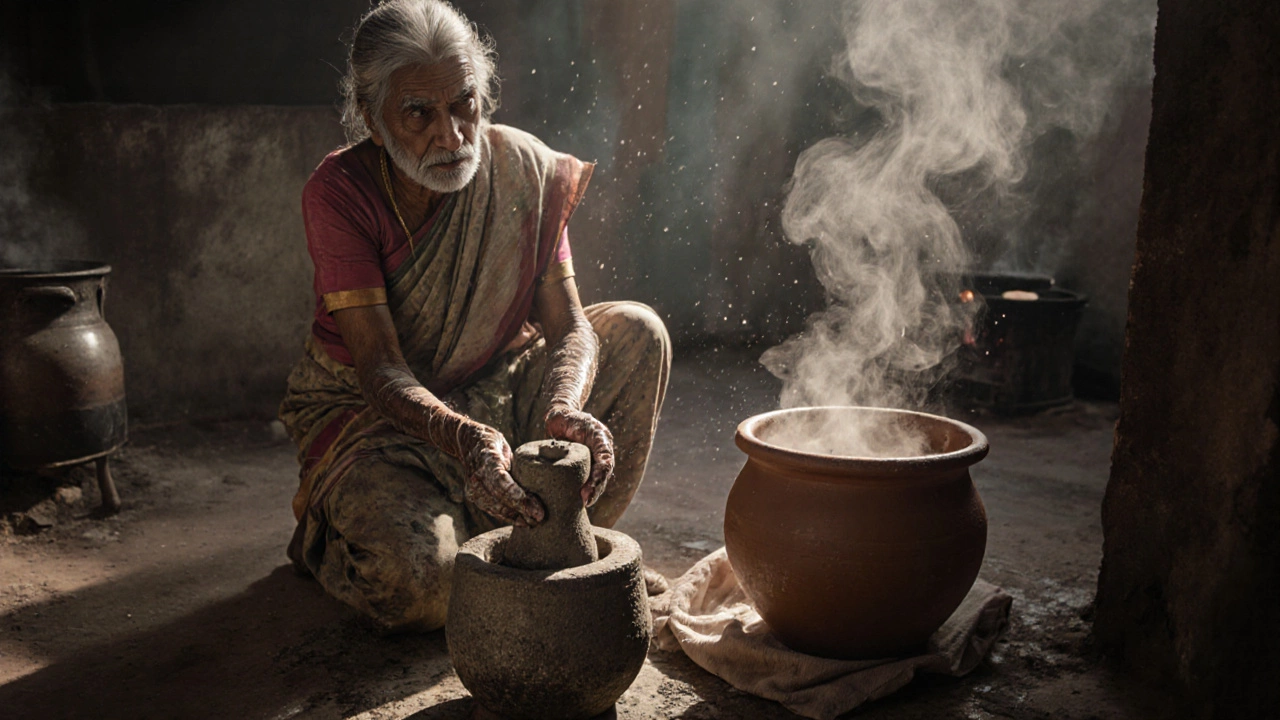
How to Try an Indian Breakfast-Even If You’re Not in India
You don’t need to fly to Kerala to eat like someone who’s lived a healthy life for decades. Here’s how to start:
- Swap sugary cereal for poha-it’s available in most Asian grocery stores. Look for “flattened rice” or “aval.”
- Make your own idli batter-mix 1 cup rice and 1/2 cup black lentils, soak overnight, grind, ferment for 8 hours. Steam in a steamer. You can even buy pre-made idli mix.
- Use coconut chutney instead of jam-grind coconut, green chili, and a touch of lentils. No sugar needed.
- Drink buttermilk-mix plain yogurt with water, salt, and a pinch of cumin. Chill it.
- Try upma-use coarse semolina (sooji), sauté with veggies, and skip the oil. Cook with water instead of milk.
You can make any of these in under 20 minutes. And they cost less than $1 per serving. Compare that to a $7 smoothie bowl with acai and chia seeds.
Why This Isn’t Just a Trend
Western health trends come and go. Keto. Intermittent fasting. Bulletproof coffee. But Indian breakfasts? They’ve lasted for 3,000 years. Why? Because they weren’t invented in a lab. They evolved through trial, observation, and survival. They were shaped by climate, crop cycles, and Ayurvedic principles that say: eat what your body can digest easily, and food should cool or warm you based on the season.
This isn’t about being “exotic.” It’s about being practical. The healthiest breakfast isn’t the one with the most buzzwords. It’s the one you can make every day without stress, that keeps you full, and doesn’t leave you reaching for a snack by noon.
India’s breakfasts don’t promise miracles. They don’t sell detox teas or expensive supplements. They just give you food that works. Real food. Real energy. Real results.
Is Indian breakfast good for weight loss?
Yes, traditional Indian breakfasts are excellent for weight loss because they’re high in fiber and protein but low in added sugar and unhealthy fats. Meals like idli, poha, and upma are naturally low-calorie, keep you full longer, and prevent blood sugar spikes that lead to cravings. Studies show people who eat these meals regularly have lower body fat percentages and better insulin sensitivity.
Can I eat Indian breakfast if I’m gluten-free?
Absolutely. Most traditional Indian breakfasts are naturally gluten-free. Idli and dosa are made from rice and lentils. Poha is flattened rice. Upma can be made with rice semolina instead of wheat. Just check labels if buying pre-made mixes-some brands add wheat flour. Stick to plain, unprocessed versions.
What’s the best Indian breakfast for diabetics?
The best options are fermented foods like idli and dosa, and dishes made with whole grains and legumes like poha and upma. Fermentation lowers the glycemic index, meaning they raise blood sugar slowly. Avoid sweet versions like jalebi or sugar-laden parathas. Pair your meal with a side of buttermilk or plain yogurt to further stabilize glucose levels.
Do I need to eat Indian breakfast every day to see benefits?
No. Even replacing your current breakfast with an Indian-style meal 3-4 times a week can make a difference. The key is consistency, not perfection. Swap out one sugary or processed meal each week, and you’ll notice better energy, fewer cravings, and improved digestion within a few weeks.
Where can I buy ingredients like idli rice or poha?
Look in the international aisle of major grocery stores, or visit an Indian or Asian market. Online retailers like Amazon, Thrive Market, or Indian grocery sites sell idli rice, flattened rice (poha), black lentils (urad dal), and coconut chutney powder. You can also find pre-made idli batter in refrigerated sections.
If you want to feel more alert, less bloated, and more energized in the morning, stop chasing the next big diet trend. Try a plate of poha. It’s simple. It’s cheap. And after 3,000 years, it’s still working.
